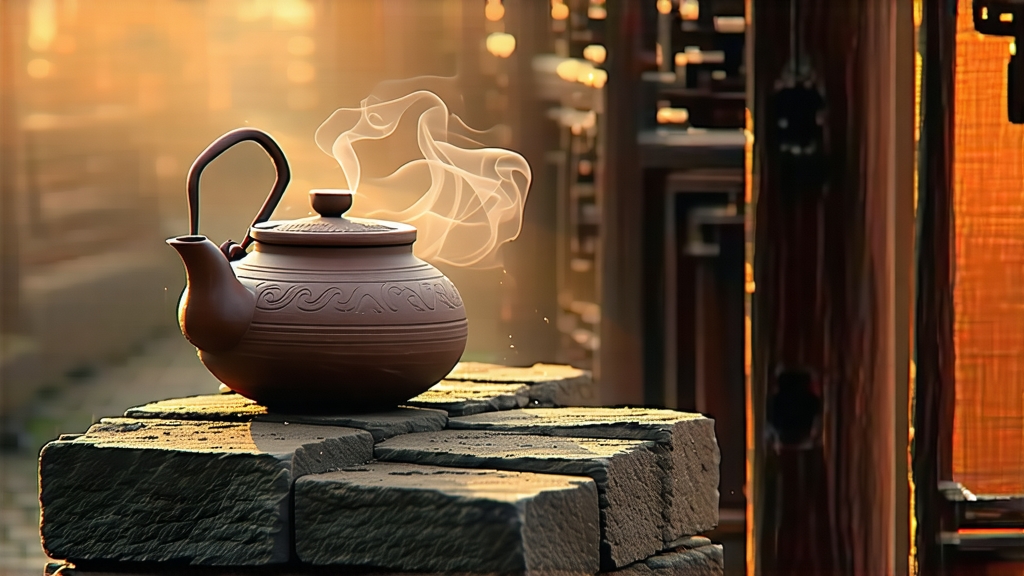
Tucked away in the humid mountains of southern China, Liu Bao cha is the quiet rebel of the dark-tea family. While Pu-erh grabs headlines and Fu bricks court photographers with their golden “flowers,” Liu Bao has spent four centuries polishing its rough edges in sub-tropical cellars, emerging with a liquor the color of mahogany and a scent that whispers of rain-soaked earth, betel nut, and a trace of camphor. To international drinkers who equate “black tea” with tannic breakfast blends, Liu Bao offers a gentle re-education: here is a tea that is fermented, not oxidized; aged, not merely stored; and whose story begins with porters, not poets.
Historical footprints
The name simply means “Six Forts,” a nod to the six staging depots that once guarded the trade route between Guangxi’s Wuzhou port and the Pearl River delta. During the Qing dynasty, imperial censors noted that the “black slabs of Cangwu county” were the only cargo that improved the farther it traveled. Compressed into 37-kilogram baskets, Liu Bao left the docks on bamboo rafts, transferred to junks, then to mule caravans that climbed the Yunnan–Guizhou plateau. Months of monsoon vapor and river mist coaxed the leaves into a slow microbial waltz, and by the time the tea reached Tibet or Hong Kong, its bitterness had mellowed into a dark honeyed bass note. In 1886 the British consul in Wuzhou listed Liu Bao among “medicinal teas sought by Malay miners for fever and ague,” the first written record of Chinese dark tea entering Southeast Asia.
Micro-terroirs within one province
Modern Liu Bao is still bound to a 2,000 km² micro-zone where the Fu River slides past granite peaks covered in Camellia sinensis var. sinensis of the medium-leaf Zhongxiao cultivar. Within this zone, three elevations produce recognizably different styles. Valley-floor gardens (80–200 m) give plump leaves high in polyphenols; after fermentation they taste of cacao and dried longan. Mid-slope gardens (200–500 m) yield thinner leaves that turn toward camphor and pine. Above 500 m, the mist-shrouded village of Liushan produces tiny harvests whose post-fermentation aroma recalls wet slate and orchid—an altitude signature prized by Guangdong collectors. Because Liu Bao is always a blend, the tea master’s art lies in marrying these elevations so that the finished brick carries both bass and treble.
Crafting the darkness
The journey from fresh leaf to market-ready Liu Bao takes a minimum of twelve months and three separate fermentations.
- Primary kill-green: Leaves are piled 5 cm deep in iron pans heated to 180 °C and hand-tossed for exactly 90 seconds—long enough to destroy leaf enzymes but short enough to preserve surface microbes.
- Rolling & sun-fixing: A 30-minute rolling bruises cell walls without breaking them; the leaf is then spread on bamboo screens for a four-hour mountain sun-bake that drops moisture to 45 %.
- First piling (wet stacking): The semi-dry leaf is heaped 70 cm high, covered with wet jute, and left for 48 hours. Internal temperature climbs to 55 °C, activating Erwinia and Bacillus strains that begin converting catechins into theaflavins and gallic acid.
- Steam-softening & basket pressing: The fermented leaf is re-steamed for 20 seconds, stuffed into 37 kg bamboo baskets lined with wild banana leaf, and compressed by a man standing barefoot on a wooden plank—an image that survives on the 10-yuan bus ticket from Wuzhou to Cangwu.
- Second piling (warehouse aging): Baskets are stacked in 90 %-humidity cellars built from volcanic tuff. Every 30 days they are restacked top-to-bottom; every 90 days the cover leaves are sprayed with mountain spring water to maintain 25 % moisture. During this year-long rest, dominant microbes shift from bacteria to Aspergillus niger and Eurotium cristatum, the same “golden flower” spores that tattoo Fu bricks, though in Liu Bao they remain invisible, weaving instead a subcutaneous lace of amber acids.
- Final drying: After laboratory moisture tests read 12–13 %, baskets are moved to riverside drying sheds where pine-fired air